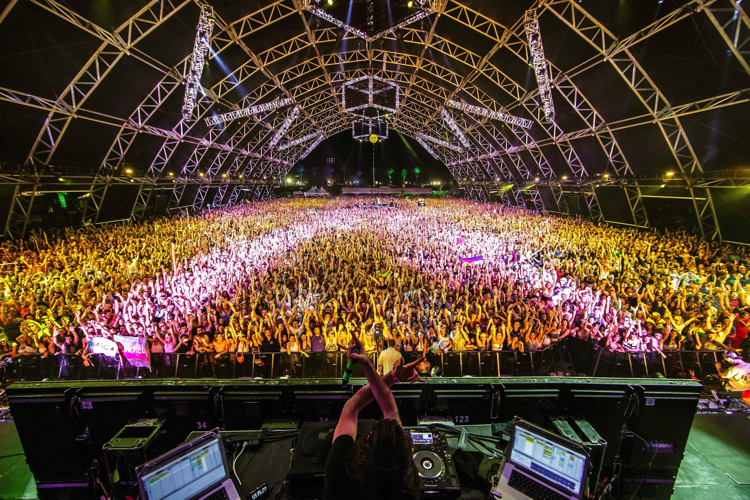By Doug Stephens

In July of 2015 the Coachella Valley Music and Arts Festival hit a milestone. Sales exceeded $84.25 million with 198,000 tickets sold – a record for the event that’s only been in existence since 1999. Attendance records are nothing new for Coachella. It has beaten its own benchmarks consecutively in each of the last 4 years. Coachella’s success isn’t unique either. Lollapalooza, The Governors Ball and Bonnaroo have all enjoyed similar exponential growth.
So, in an age where nearly-free music is as ubiquitous as running water, why do 198,000 people camp at a three-day music festival in a desert valley in southern California? There may be many reasons but one can assume that at the heart of it is the promise of a kinetic experience. They go not only to see and hear music, but to feel it and in a way, become one with it. They go to be part of a living thing – to soak up its energy. In a world where almost every aspect of our lives is somehow tethered to technology, experiences that engage our bodies, our senses and our souls are at a premium. Digital is what we’ve become but visceral is what we crave. Our need to detach and escape reality just for a while is powerful and only bound to grow as we become more digitally driven.
The Retail Matrix
However, when we turn to retail, many brands and retailers pull us in the opposite direction. They invite us to malls, shopping centers and stores where they then ask us to interact with their screens, virtual reality headsets, kiosks or our own mobile devices. In essence, we’re being asked to put down our technology at home only long enough to go to a store to use more technology. It’s to the point that the number of screens in a retail store has become bragging rights for retailers as they seek to technologize their environments. This is a mistake – not because technology shouldn’t be incorporated into stores but because the goal of operating physical stores as a technological experience is fundamentally misguided.
I’m the first to evangelize the unprecedented array of technologies at our disposal and the fact that all can add value to the shopping experience. Mobile can act as the all-important digital mortar between the bricks of the physical store. The internet of things can allow for greater analytic capability and personalization of the shopping experience. Digital media can add entertainment value and visual excitement. But none of these things should be implemented at the expense of the wonderfully physical, human and kinetic nature of the store. The physicality of a store is not something we should be subjugating with digital but rather something we should be celebrating!
We Are Gatherers
The true joy of a store is not looking at digital representations of products on a screen but being able to touch, feel, taste, smell and experience products in a visceral way. It’s not about watching a golf video in a sporting goods store. It’s about swinging a golf club. It’s not about speaking to a chatbot about your product needs. It’s relating with an enthusiastic and delightfully human product expert. It’s not using virtual reality to escape the boredom of the store. It’s using a remarkable store to escape reality – to enter a different world – just for a while! Consumers crave physical experiences at retail – not because they can’t get the goods they want online but because of an almost primordial need to interact with the things we gather.
Finding the critical balance between the physical and the digital is a matter of skillful  experiential design. Searching for experiential inflection points where shoppers can be physically engaged and immersed is key. Technology can be a vital component of bringing remarkable store experiences to life but in their rush to accommodate an increasingly connected consumer, retailers must respect and augment the intrinsic and joyfully kinetic nature of the store.
experiential design. Searching for experiential inflection points where shoppers can be physically engaged and immersed is key. Technology can be a vital component of bringing remarkable store experiences to life but in their rush to accommodate an increasingly connected consumer, retailers must respect and augment the intrinsic and joyfully kinetic nature of the store.
In a way, every store needs to be a small Coachella experience. An experience that stays with shoppers long after they’ve left the store.

